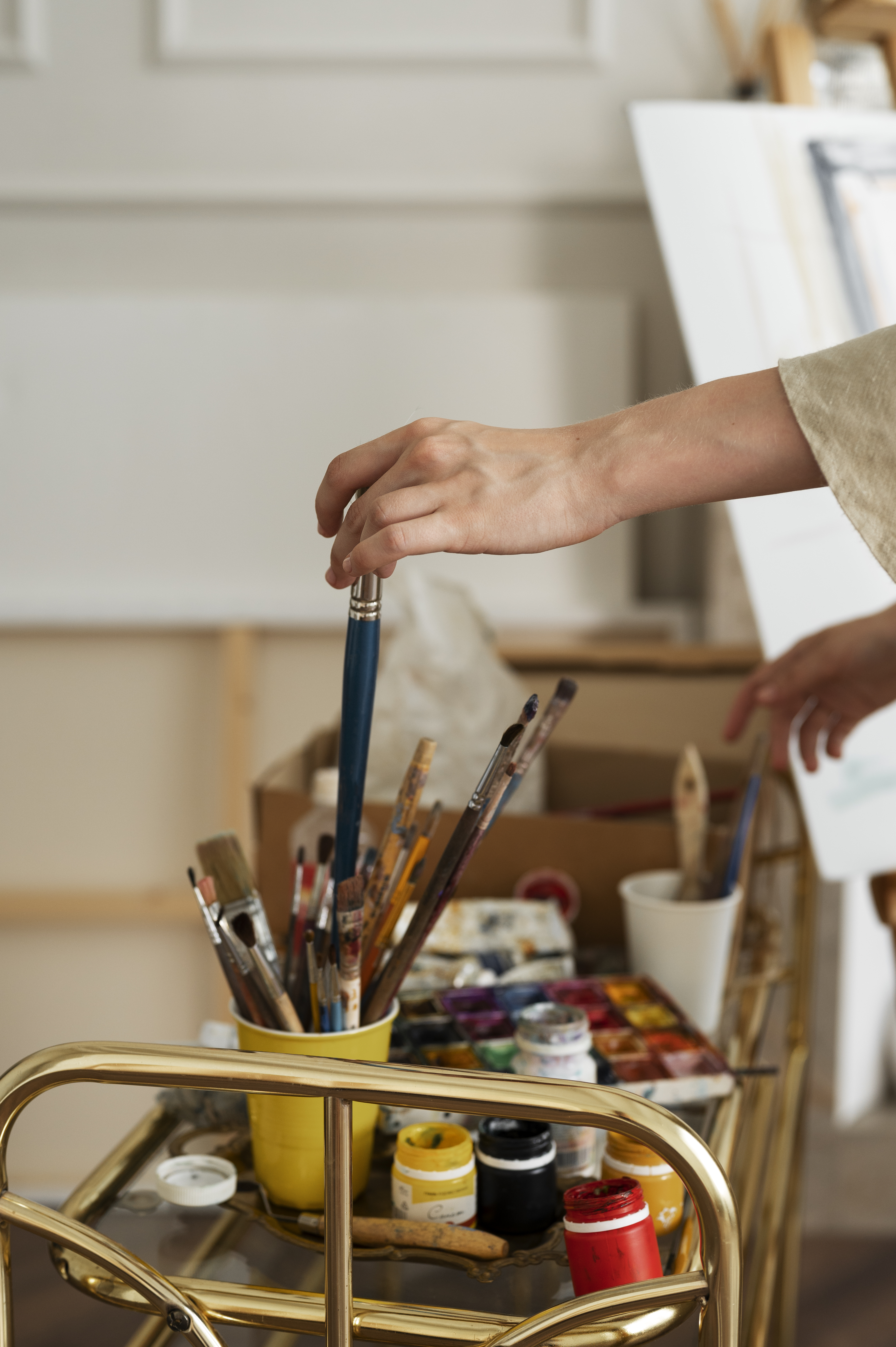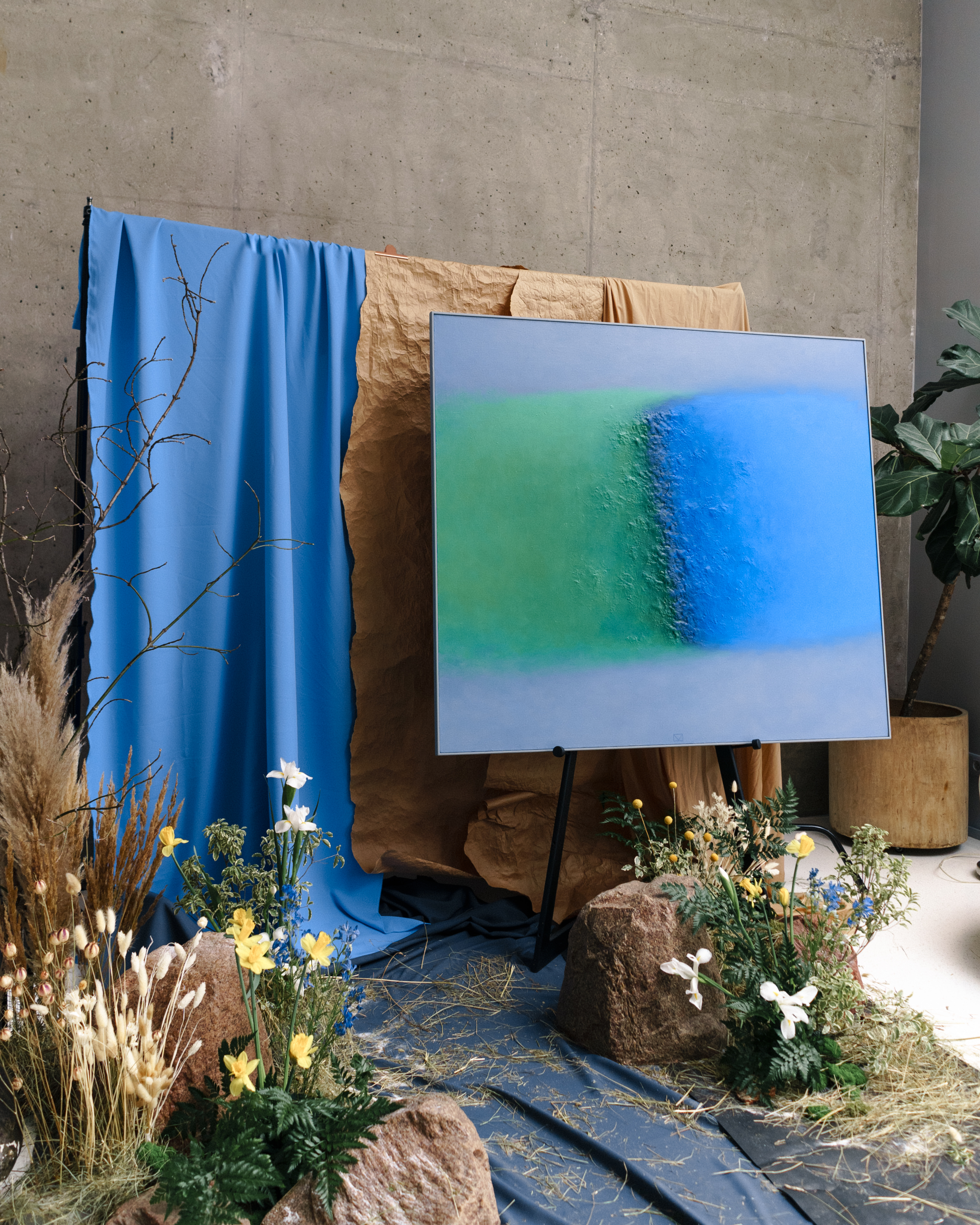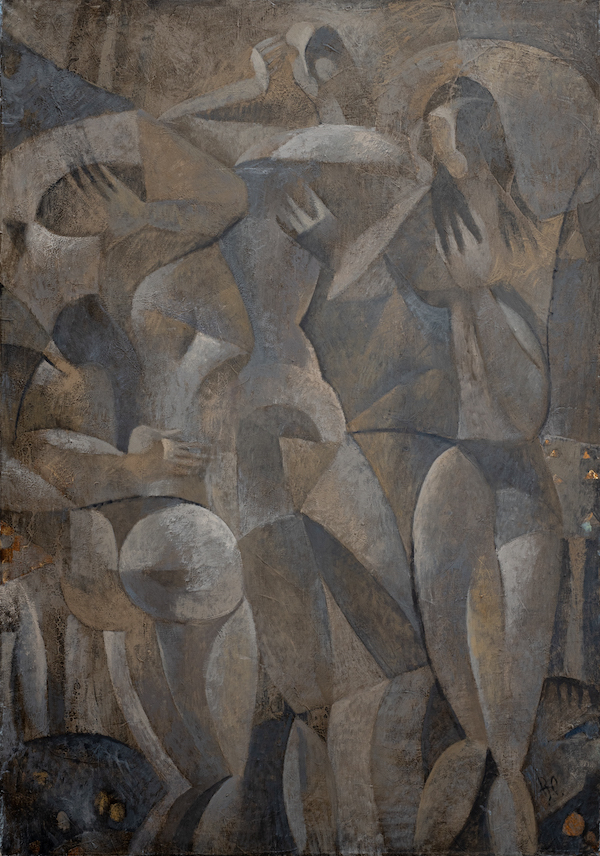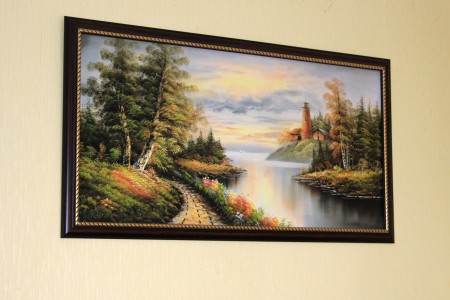Мы не понаслышке знаем, что найти картину онлайн довольно сложно, особенно если не иметь представления, где искать. Сегодня расскажем, как куратор нашей галереи справляется с этой задачей и отбирает картины для наших клиентов.
Куратор — связующее звено между художниками, галереей и публикой. Именно от него во многом зависит, с кем будет сотрудничать галерея — картины каких художников будут представлены в коллекции и доступны для приобретения.
С чего начинается и как происходит процесс выбора живописи? Куратор галереи SMART Мария Горбунова приоткрыла завесу тайны и рассказала, где она находит новые имена, какими принципами руководствуется в работе, и что происходит от момента начала поиска до появления картины на сайте галереи.
Принципы работы куратора
 Мария Горбунова, куратор галереи SMART
Мария Горбунова, куратор галереи SMART
Перед тем как перейти непосредственно к рассказу о выборе авторов, хочется остановиться на принципах, которыми я руководствуюсь в своей деятельности:
- во-первых, я ищу профессионалов с большим опытом в живописи. Художник должен быть состоявшимся автором, с выраженной позицией в искусстве, а также желательно с профессиональным образованием.
- во-вторых, пул художников в галерее SMART, в основном, состоит из авторов, которых я нашла сама. Мы редко берем художников, которые обращаются к нам непосредственно. Это связано с тем, что для нас важно, чтобы автору было близко кредо «я в искусстве и искусство во мне». Нам важно, чтобы живописец полностью отдавал себя творчеству, поэтому авторы, совмещающие искусство с работой дизайнера или архитектора, нам не подходят.
- в-третьих, мы всегда выбираем из уже ранее написанных уникальных картин, созданных для выставочных проектов. Авторских копий, либо работ, написанных на заказ специально для галереи, в нашей коллекции нет.
Как найти художника?
 Фотография с freepik.com
Фотография с freepik.com
Для поиска новых художников я использую разные каналы: сайты онлайн-галерей, инстаграм, вконтакте, телеграм, персональные страницы мастеров в интернете. Их имена я нахожу через сюжеты о выставках на YouTube, социальных сетях или на сайтах музеев.
От момента начала поиска художника до появление его картин в коллекции галереи может пройти от нескольких недель до нескольких месяцев. Многое зависит от того, когда художник сможет предоставить отобранные нами работы. Часто картины могут находиться на выставках в России или за рубежом, поэтому работа по поиску новых имен ведется постоянно. Как правило, одновременно переговоры ведутся с 3-4 авторами.
Сам процесс состоит из нескольких этапов:
- После завершения поиска, я отсматриваю полное портфолио выбранного художника, читаю его биографию, проверяю на каких сайтах он продается, узнаю и сравниваю стоимость его картин в различных галереях.
- На следующем этапе я проверяю художника по госкаталогу Министерства культуры РФ. При необходимости пишу запрос в музей на предмет наличия работ данного автора в музейных коллекциях, указанных художником на сайте или в биографической справке в социальных сетях.
- Чтобы понять философию, образ мыслей художника, особенности его техники я внимательно читаю статьи о нем или смотрю интервью.
- Нам важно, чтобы художник вел активную творческую деятельность. По выставкам, интервью, участию в профессиональных сообществах я примерно могу понять, насколько художник активно работает.
Как отобрать картины?

Самое интересное в работе происходит после того, как я нашла художника. Как только с автором достигается договоренность о сотрудничестве, начинается непосредственно отбор работ или целых серий. Расскажу об этом на примере одного автора.
Для нашей галереи важно представить каждого художника по смыслу, идейной составляющей и качеству подачи цельно. Как правило, у художников в портфолио есть очень разные работы. Автор может работать в стиле абстрактной живописи и при этом у него могут быть прекрасные концептуальные работы, миксы и так далее. Мне важно отобрать наиболее удачные работы или серию работ, созданных в одном стиле. Например, в нашей галерее представлен художник Веселик Юрий с серией работ «Стравинский». Мы выбрали именно эту серию, потому как она была наиболее мощной и цельной: по формату и по пластическому языку.
 «Три грации. Серия «Стравинский»», художник Юрий Веселик
«Три грации. Серия «Стравинский»», художник Юрий Веселик
Серия посвящена музыкальным произведениям Игоря Федоровича Стравинского, художник использует язык кубизма. В некоторых работах данной серии кубизм становится аналитическим, структурным, подчеркивает суть каждой детали. Автор неслучайно выбрал такой визуальный язык, суть которого – рождение ритмической составляющей в рамках живописного произведения.
После того, как автор найден, конкретная серия отобрана, утверждены цены на работы, мы проверяем качество натяжки холста, инспектируем красочный слой. Художник тонирует борта картин, проверяет подрамники и при необходимости перед передачей картины может, например, перенатянуть холст.

Далее работы поступают в наше специальное хранилище для того, чтобы у нас был постоянный доступ к картинам для съемок и примерок у клиентов.Только после поступления картин в хранилище, новые работы публикуются на сайте.
От момента начала поиска художника до появления его картин в каталоге галереи SMART может пройти от нескольких недель до нескольких месяцев. При этом каждый этап работы: поиск художника, отбор картин, проверка качества картин, доставка в хранилище и размещения на сайте – одинаково важен, потому что только так можно получить в коллекцию редкого автора, отличную серию и качественные живописные полотна.
Поэтому каким бы простым ни казался процесс выбора художника и картин, работа на самом деле очень непростая и требует не только большого опыта и насмотренности в плане современного искусства, но и опыта общения с творческими людьми.
Мы не понаслышке знаем, что найти хорошую картину довольно сложно, особенно если не иметь представления, где искать. Сегодня расскажем, как куратор нашей галереи справляется с этой задачей и отбирает картины для наших клиентов.
Куратор — связующее звено между художниками, галереей и публикой. Именно от него во многом зависит, с кем будет сотрудничать галерея — картины каких художников будут представлены в коллекции и доступны для приобретения.
С чего начинается и как происходит процесс выбора живописи? Куратор галереи SMART Мария Горбунова приоткрыла завесу тайны и рассказала, где она находит новые имена, какими принципами руководствуется в работе, и что происходит от момента начала поиска до появления картины на сайте галереи.
Полный текст статьи доступен
на нашем сайте.
От себя добавлю:
статья очень наглядно дает понимание, что поиск картины для своего дома не сводится к действиям: открыл ноутбук, ввел в поисковик “купить картину”, пролистал страницы пары сайтов, кинул в корзину, оплатил и доставили. Увы, все намного сложнее, поскольку на арт-рынке много некачественного, чернушного и слабого креатива.
Но даже из отличных работ сильных авторов вам сложно будет сделать выбор, если вы не обладаете насмотренностью в контексте современного искусства. Работа куратора как раз и заключается в “сортировке” и отборе.
Ставьте лайк и подписывайтесь на наш канал, чтобы быть в курсе, что такое “современное искусство”!
Download Article
Download Article
Learning more about a piece of famous art is easy, but identifying an unknown or obscure painting can be tricky. There are so many paintings in existence that the odds of finding information about a specific image can feel insurmountable. Luckily, you can dramatically narrow down your search by assessing the composition, subject matter, and style. Start by using an image recognition app and reverse image search. Museums and art historians are in a perpetual effort to upload and catalogue paintings and artists online, so it may be easier than you think to find the information you’re looking for!
Things You Should Know
- Use an image recognition app or run a reverse image search. You can also use the signature on an image to find it online.
- Ask an expert to identify the painting for you, or do it yourself using clues to narrow down the date and the artistic movement the painting belongs to.
- Check the back of the painting for notes from previous owners and the frame for a manufacturer. Bring a larger collection to an art dealer.
-

1
Use an image recognition app to identify the painting immediately. If you’re struggling to remember an artist’s name or you want additional information on a particular painting, download an image recognition app designed specifically for art. There are several apps for both Android and iPhone that allow you to snap a photo of a painting to search through museum catalogues, university databases, and art history texts. This is the easiest way to find a specific painting.[1]
- The two most popular apps for recognizing artwork are Smartify and Magnus. Both of these apps will pull up information about the work’s artist, as well as interesting facts and background information about the composition.
- These apps only have access to paintings that have been well-documented and catalogued by curators, professors, historians, and other artists. If the painting is made by a more obscure artist, these apps may not work.
-

2
Run a reverse image search if you have a digital copy of the painting. If you’re looking at a painting on your computer or phone, run a reverse image search. Copy and paste the image’s URL into the search engine. Run the search to pull up other websites displaying the painting. This will give you access to a variety of websites that will tell you everything you need to know about the painting.[2]
- If you’re using Google Chrome, you can right click an image and select “Search Google for this image” to search the web.
- You can download an image and upload it to the engine instead of copying and pasting the URL if you prefer.
- The most popular reverse image search is TinEye, but there are several options available online.
Tip: You can try taking a photo of a painting and uploading the image to the search engine, but you’re less likely to find accurate results. These search engines aren’t great at taking photos and finding digital versions of the image, but it may work!
Advertisement
-

3
Use the signature or monogram to dig online and find the image. Look in the corners of the painting to see if there is a signature or monogram. If the name is easy to read, simply search the artist’s name up online to find the painting. If it’s harder to read, look carefully to see if you can break down the letters and read them. This will let you narrow down the search and figure out who the artist is, which can make it easier to find your specific painting.[3]
- A monogram refers to a 2- to 3-letter design containing the artist’s initials. Monograms tend to be more popular among painters working after the 1800s.
- Signatures were almost never used before the Renaissance, which began around 1300. Even if you can’t identify a signature, at least you have a baseline for your search![4]
- You have to sign up for a free account to use it, but you can use https://artistssignatures.com/ to reverse search for an artist’s signature. This is useful if you think you can read the signature but want to double-check to make sure you aren’t misreading it.
Advertisement
-

1
Ask an expert to identify the era, style, or painter of an image. Email or visit a museum curator, art history professor, or gallery owner to ask if they can take a look at the image. An expert in the field of art will be able to offer insights about the period, style, and give you a better sense for where to look. They may even know who the artist is as soon as they take a look at it![5]
- If you’re contacting a gallery owner, try to find a gallery that specializes in the type of art you’re trying to identify. For example, a contemporary abstract piece is going to be easier to identify if the gallery owner mainly focuses on newer artists.
-

2
Use obvious clues in the subject matter to narrow down the date. Contemporary painters may paint people or objects from the past, but they can’t time travel! If there’s a train, company logo, digital clock, or some other time-specific component of the painting, this is a great way to set a baseline for your search. You can get a good overall sense for when a painting may have been made simply by asking yourself when an artist would have painted their subject.
- For example, there aren’t many painters alive today painting portraits of Spanish aristocrats from the 1600s, and absolutely nobody was painting images of Elvis Presley before 1954!
- For example, if there is a small airplane in the background of the painting, you know that the painting must have been made after 1903, since that’s when Wilbur and Orville Wright first successfully flew a plane.
-

3
Identify the artistic movement by assessing the style of the painting. There are various artistic movements throughout history that share similar qualities. Determining the movement associated with an image is a great way to quickly narrow down your search since historians group artists from the same movement together.[6]
- There are hundreds of movements; if you can’t figure out the movement at first glance, look through museum catalogues and online collections to find similar paintings.
Common Movements:
Neoclassical – It may be neoclassical if the light looks artificial and you’re looking at a painting of a large group of aristocrats, a general, a raging battle, or a dramatic religious scene. The image was likely painted between 1750-1850.
Expressionism and Impressionism – These paintings tend to have expressive brush strokes colors that aren’t exactly accurate. The image may be “messy” but you should still be able to figure out what you’re looking at. These styles were popular between 1860-1920.
Realism – If the painting looks kind of like a photo (or exactly like a photo) and nobody in the image is dressed up or posing for the painting, it was probably made after 1840.
Abstract and Experimental – For these movements, you’ll probably have no idea what’s going on in the painting. These paintings rarely depict anything you can immediately identify and are only found after 1930.
-

4
Determine if the artist used acrylic paint to see if it was made after 1940. Get as close as you possibly can to the image. If the color looks flat and the darker colors don’t reflect light, it’s probably oil paint. If the color is reflective, shiny, and looks kind of plastic, it is likely acrylic paint. Acrylic paint wasn’t used in art until 1940, so you have a much smaller period to search through.[7]
- If more than one medium was used to produce a work, it is highly-likely that the image was created after 1900. It was fairly rare before this period to combine multiple materials to produce a painting.
- This is a lot harder to do if you’re looking at a digital image, but if the colors are almost supernaturally bright or neon, the painting was probably made with acrylic.
-

5
Assess the quality of the canvas or paper to determine the date. If the canvas is stapled into the frame uniformly, it is unlikely to have been made before 1900, which is when canvases were first mass produced. You can also assume the painting is relatively newer if it’s is on paper and there’s no tearing, damage, or general wear and tear. Paper is relatively fragile, and it’s unlikely that a fresh piece of paper is particularly old.[8]
- If the canvas is hanging loosely on the frame, the painting may have been made prior to 1600. Before 1600, most artists weren’t particularly good at stretching the fabric tight against the frame.
-

6
Search through websites and catalogues after narrowing the search. If you know you’re looking for art from a specific time period or movement, go online and search through galleries and websites related to this type of art. Look for paintings that are similar in style, color, and composition. You can also go through museum databases and encyclopedias to find your image to do this as well. With enough luck, you’ll find the artist![9]
- Almost every major museum has an online dataset that you can search. Search through these catalogues to find similar pieces that may belong to your artist.
- Once you have the artist, finding the specific painting is fairly easy. Museums and universities often catalogue and document the entire body of work for well-known painters, so you should be able to find the specific painting just by poking around online.
Advertisement
-

1
Inspect the back of the painting to find notes from previous owners. If you really can’t find anything about an image in your possession using traditional search methods, flip the canvas over and look at the back. If the image is a print or reproduction, it may be listed on the back. If the painting is a family heirloom or was bought at a thrift shop, there may be a handwritten note describing where the painting is from.[10]
- Use the other steps in this method first before looking for lesser known details. It’s possible that the painting is a reproduction, print, or mass-produced version of a popular painting.
- If you see 2-3 numbers listed in a corner, the painting was probably purchased at a thrift shop or resale store. The employees of these stores often write the price on a back of a work. You’re unlikely to be able to identify the artist or image in this case.
-

2
Check the frame to see if you can find a manufacturer. Inspect the frame on the back and look for an imprint, or label. Frame manufacturers often print a company name on the back. If there is a name, contact the manufacturer to learn more about the frame itself. This can drastically narrow down the region and time period where a painting was produced.[11]
- If you only have the canvas and there is no frame, check the wood portion of the canvas on the back. Prior to 1900, most artists stretched their own canvases. If there is a signature on the wood frame, it’s probably the artist’s.
- This isn’t really a helpful option if the painting is well known or really old, since it was likely re-framed at some point.
-

3
Take a large collection from an unknown painter to an art dealer. If you stumble on a large number of paintings and you can’t find a single thing about the artist online or through close inspection, contact an art dealer. Many lifelong artists paint simply because they enjoy it, and it’s possible that you may have stumbled on to a unique collection from a totally unknown artist![12]
Variaton: If the paintings appear particularly old, contact a museum curator or art historian instead. Older paintings tend to be more valuable from a historical perspective.
Advertisement
Ask a Question
200 characters left
Include your email address to get a message when this question is answered.
Submit
Advertisement
-
If you want to figure out if a painting in your possession is worth anything, contact an appraisal service. That’s really the only way to authentically confirm whether your painting is worth anything or not.[13]
-
For many paintings, it will impossible to say definitively who painted the work or when it was made. You may be able to make an educated guess about the era or artist’s background, though!
Thanks for submitting a tip for review!
Advertisement
About This Article
Thanks to all authors for creating a page that has been read 298,172 times.
Did this article help you?
Main
Top
Interesting
500 ideas
Help
Follow us:
-
Follow us on Vkontakte
-
Follow us on Telegram
-
Follow us on Pinterest
-
Follow us on Odnoklassniki
Applications
-
iOS
-
Android
-
Huawei
COMPANY
-
About
-
News
-
Help
PRODUCTS
-
Checklists
-
Button “Share”
-
Media program
COMMUNITY
-
Afisha LJ
-
Frank
-
Stylish merch
CHOOSE LANGUAGE
-
Privacy Policy
-
User Agreement
-
Help
LiveJournal — v.661
?
LiveJournal
Top

-
Readability
-
qetevan
Archive
Readability
![]()
-
-
qetevan
July 29 2015, 20:08
Как найти автора и название картины, при наличии изображения
Автор – Мила-Милена. Это цитата этого сообщения
Вдруг кто не знает …
Если картина достаточно популярна и известна , то её вполне реально найти по визуальному интернет поиску.
Открываем поисковик:
И вводим туда ваше изображение с компа или с непосредственно с инета.
Появится много сайтов,где можно найти автора картинки.Загружаем здесь…
Для Вас ,Mikа
Оригинал записи и комментарии на LiveInternet.ru
изображениеинтернет поискполезное
Как найти картину
Уже не одно столетие люди размещают в интерьеры своих жилищ картины. Правильно подобранный объект может дополнить оформление комнаты, внести в него завершенность. Также картины являются одним из самых известных предметов коллекционирования и вызывают высочайший интерес у любителей искусства. Чтобы найти подходящую картину, можно воспользоваться возможностями, которые предлагает нам Глобальная сеть.

Вам понадобится
- Персональный компьютер, базовая комплектация, доступ к всемирной сети интернет.
Инструкция
Включите компьютер и запустите интернет-браузер.
В любой поисковой системе введите запрос «Купить картину» или «Покупка картины». Поисковик выдаст вам множество ссылок на разнообразные интернет-магазины, галереи и прочие сайты соответствующей тематики. Также можно зайти на один из интернет-аукционов, где есть возможность купить представленный лот по сниженной цене.
Пройдите по одной из ссылок. Как правило, на тематических сайтах картины поделены по определенным категориям: «Жанры», «Стили и направления», «Художники». Таким образом, вы можете сразу приобрести произведение любимого живописца или подобрать картину, к примеру, в разделе «Пейзажи».
Выберите желаемую категорию и внимательно изучите ее содержание.
Выберите картину по душе и нажмите кнопку «Купить».
Заполните форму заказа и ожидайте, пока с вами свяжется представитель сайта.
Видео по теме
Обратите внимание
Для маленьких помещений совершенно не подходят картины большого размера. Здесь действует такое правило: диагональ картины должна быть два раза меньше расстояния между картиной и зрителем.
Полезный совет
Жанр и стиль картины должен соответствовать функциональному назначению комнаты (к примеру, натюрморт лучше всего разместить в кухне или столовой). Картина обязательно должна сочетаться с общим стилем помещения.
Источники:
- Огромный выбор картин различных жанров
Войти на сайт
или
Забыли пароль?
Еще не зарегистрированы?
This site is protected by reCAPTCHA and the Google Privacy Policy and Terms of Service apply.
